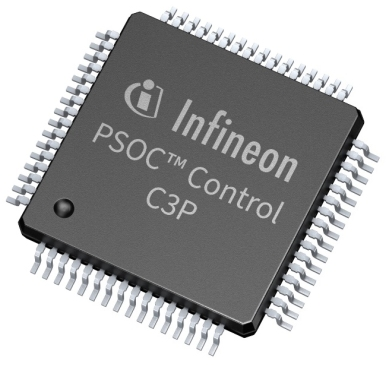Infineon Introduces PSOC™ Control MCUs to Improve Performance and Efficiency of Motor Control and Power Conversion Systems
2025-01-24 11:02:38 1107
MUNICH, GERMANY, January 22, 2025 - Infineon Technologies AG (FSE: IFX / OTCQX: IFNNY), the global semiconductor leader in power systems and the Internet of Things, introduces PSOC™ Control, the latest family of high-performance microcontrollers (MCUs) based on the Arm® Cortex®-M33. in Supported by ModusToolbox™ system design tools and software, this comprehensive solution enables developers to easily create high-performance, efficient and safe motor control and power conversion systems. PSOC™ Control C3 is available in both entry and mainstream grades, offering a wide range of performance, functionality, and storage options for both scalability and compatibility. The dedicated MCU for motor control (C3M) and the dedicated MCU for power conversion (C3P) address the needs of key applications such as: household appliances, industrial drives, robotics, light electric vehicles (LEVs), solar energy and HVAC systems.

Figure. 1 PSOC™ Control C3P
Steve Tateosian, senior vice president of industrial and IoT microcontrollers at Infineon Technologies, said: “The next generation of industrial motor and power conversion applications use wide-bandwidth power devices to improve system efficiency and require faster loop control. We are committed to providing best-in-class system solutions and design environments that help developers take full advantage of the innovative analog and digital technology of Infineon's new PSOC™Control.”
Infineon's new PSOC™Control C3 MCUs enable real-time control of systems that need to respond to real-time events with low latency and low utilization. This new MCU family features the powerful Arm® Cortex®-M33 running at up to 180 MHz and is equipped with a Digital Signal Processor (DSP), a Floating Point Unit (FPU), and a Coordinate Rotation Digital Computer (CORDIC, a mathematical function hardware gas pedal for accelerating control loop calculations). The MCUs are equipped with a wide range of peripherals, on-chip memory, as well as a variety of interfaces and pulse width modulation (PWM) architecture.
The PSOC™ Control entry-level MCUs (C3P2 and C3M2) use high-resolution and high-precision A/D converters and timers, while the mainstream MCUs (C3P5 and C3M5) use high-resolution PWM (HRPWM), enabling high-performance systems to respond to real-time events with less latency. All four families support the execution of power and motor control loops, with the mainstream grade MCUs adding advanced features for higher switching frequencies and support for power systems using wide-bandwidth (WBG) switching.
The PSOC™Control C3 MCUs are equipped with robust security features such as Class B and SIL 2 security libraries, and PSA Certified™ Level 2 security certification/EPC2 standard security certification (EPC2). IP protection and device firmware updates are possible through cryptographic gas pedals, TrustZone and secure key storage.
PSOC™Control is powered by ModusToolbox™, a unified ecosystem platform of tools and software solutions that provides a dedicated ecosystem and software libraries Motor Suite and Power Suite for PSOC™Control-focused applications. The integrated graphical user interface of these two suites not only simplifies the evaluation and training process, but also provides critical insights into performance, efficiency and reliability through real-time parameter monitoring. With a dedicated application environment, engineers are able to quickly identify problems, optimize designs and enhance overall functionality.
Infineon will be demonstrating the new PSOC™ Control MCU at Embedded World 2025 in Nuremberg at the Infineon booth (Hall 4A, Booth 138).




